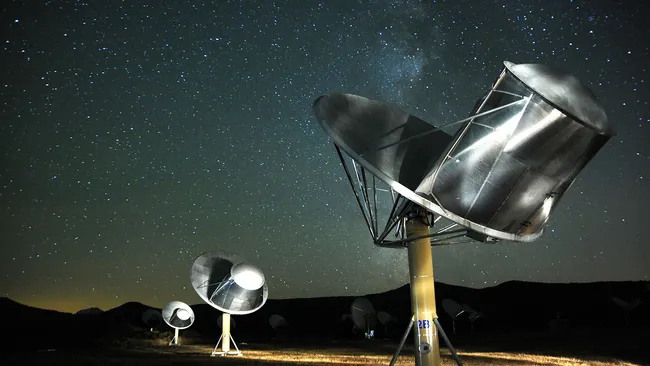Scientists have launched a unique search using the Murchison Wide Field Array to scan thousands of distant galaxies for signs of advanced alien technology.
The SETI Institute, together with the SETI Research Center at Berkeley and the International Center for Radio Astronomy Research, has launched groundbreaking work using the Murchison Widefield Array in Western Australia. Dr. This pioneering research, led by Chenois Tremblay and Professor Stephen Tingay, aims to detect alien technology in galaxies beyond our own using low radio frequencies (100 MHz).
Advanced extraterrestrial search technologies
The innovative work takes advantage of the array’s wide field of view, allowing the team to capture nearly 2,800 galaxies in a single observation, with a known distance for 1,300 of them. This approach extends traditional SETI studies, which typically focus on signals within our own galaxy, to search for technologically advanced supercivilizations that may exist in distant galaxies. To send signals from another galaxy, a civilization would need technology powerful enough to harness the energy of its sun or several stars in its galaxy.
Information from initial findings
“This work is a significant step forward in our efforts to detect signals from advanced extraterrestrial civilizations,” Tremblay said. “MWA’s wide field of view and low frequency range make it an ideal tool for this type of research, and the constraints we identified will guide future research.”
Although this initial study did not detect any technological signatures (signs of alien technology), it provides information that will help focus future searches. This shows how important it is to continue exploring different radio frequencies and taking advantage of the unique capabilities of telescopes like MWA.
Expanding technosignature research
“MWA continues to open new avenues of exploration of the universe for intelligent civilizations and technosignatures by using the same data to study the astrophysics of stars and galaxies. “This work is new and unconventional, but it also paves the way for future observations with more powerful telescopes.”
This research highlights the importance of international collaboration and the use of advanced technologies to expand our understanding of the universe. The SETI Institute searches for signs of intelligent life in space and works to expand our knowledge of the universe.













